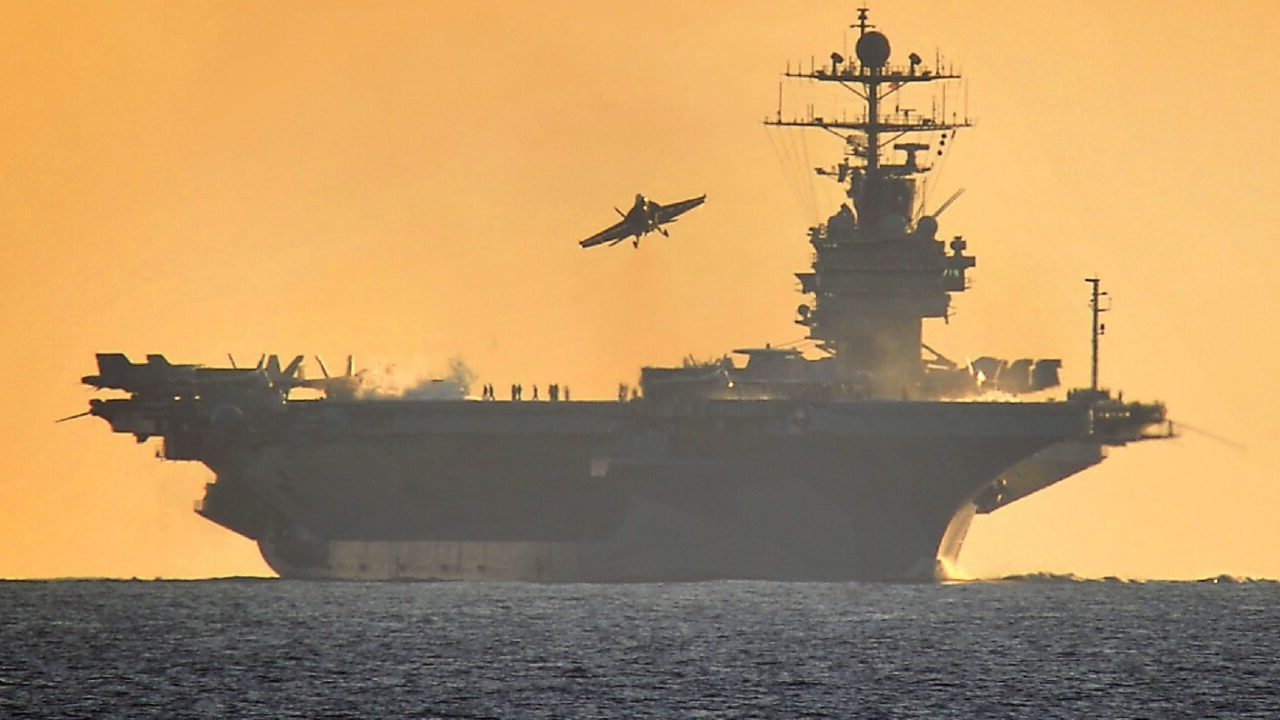Send in the Aircraft Carriers To Aid Florida Recovery Efforts from Hurricane Ian: On Thursday morning, President Joe Biden approved a Florida disaster declaration, which will begin the process of sending federal money to help state, tribal, and local efforts after the Sunshine State was hit hard by Hurricane Ian on Wednesday. Some 5,000 Florida National Guard personnel were already issued orders for state active duty or to stand by to be called upon if needed.
The state had pre-positioned Guard soldiers, airmen, and equipment at bases and armories around the state in preparation for deploying them to areas impacted by the storm. They have likely already begun to provide route-clear, begun search and rescue operations, and are supporting flood control and security. Neighboring states were also prepared to make upwards of 2,000 of their own Guard troops available to aid in the efforts.
Multiple U.S. military bases had been evacuated of all non-essential personnel prior to the storm, and multiple U.S. Navy warships were sent to sea. Now that the storm has passed, it is likely that some of the Navy’s largest warships could be deployed to aid in the recovery efforts. And that could mean aircraft carriers.
Aircraft Carriers Have Helped in the Past
It was 17 years ago that the United States Navy’s Nimitz-class supercarrier USS Harry S. Truman (CVN-75) was dispatched to the Gulf of Mexico to assist following Hurricane Katrina. The carrier, which served as the flagship for the Naval task force, joined the Wasp-class amphibious assault ships USS Bataan (LHD-6) and USS Iwo Jima (LHD-7). Thousands of Meals Ready-to-Eat (MREs) were flown from the vessels’ HH-60H Seahawk helicopters to victims of the storm that hit New Orleans in the late summer of 2005. In total, the Navy had sent 28 ships within 24 hours of the storm making landfall in the region.
The USS Wasp (LHD-1) also provided similar aid following 2012’s Super Storm Sandy that struck New York and New Jersey, while USS Abraham Lincoln (CVN-72), along with USS Iwo Jima (LHD-7), and amphibious transport dock ship USS New York (LHD-21), were dispatched to assist with Hurricane Irma recovery efforts after that storm savaged several Caribbean islands. The carrier was even loaded with additional helicopters to help with the rescue efforts and to deliver supplies.
The warships are often called upon because aircraft carriers can rapidly deploy large amounts of people and supplies to stricken areas following a natural or manmade disaster.
“There is nothing that can compare to the flexibility and offer the capabilities of a carrier. It is not just for launching strike aircraft, there are all those other things it can do, ranging from humanitarian to disaster relief,” Brad Curran, aerospace and defense industry principal analyst at Frost & Sullivan, had told this reporter in 2015.
What was true after Katrina, Sandy and Irma is that the Navy’s carriers help provide untold aid to those in need. We’ll likely see aircraft carriers steaming full-speed ahead to Florida by the weekend. Simply because nothing can do what a carrier does – both in war and in peacetime.

